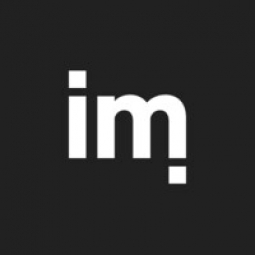Technology Category
- Cybersecurity & Privacy - Database Security
- Infrastructure as a Service (IaaS) - Cloud Databases
Applicable Industries
- Cement
- National Security & Defense
Applicable Functions
- Maintenance
- Quality Assurance
Use Cases
- Smart Campus
- Tamper Detection
Services
- Software Design & Engineering Services
- Testing & Certification
About The Customer
Brock University is a leading Canadian institution located on the beautiful Niagara Peninsula in St. Catharines, Ontario. It is the only Canadian university that is part of a UNESCO Biosphere Reserve. With a student population of over 17,000, Brock turns out smart, successful graduates that enjoy one of the highest employment rates in the country—96.5 percent. Brock U offers a wide array of undergraduate, graduate and interdisciplinary degree programs. The university was determined to protect itself from the major data breaches that have been reported by so many educational institutions in recent memory.
The Challenge
Brock University, a leading Canadian institution, was facing a significant challenge with its IT infrastructure. The university's mainframe, proprietary database was no longer capable of supporting its online programs and corresponding web-based applications. As the university planned to move from its proprietary mainframe database to a Microsoft SQL Server environment, it was concerned about the protection of its applications and data. The new environment would support a wide array of homegrown, web-based front-end applications, including student self-service applications, administration, finance, and business applications. The university was also concerned about protecting its database against new vulnerabilities that could be introduced over time. Furthermore, the combination of its custom web applications, thousands of users, and database conversion project was going to present a significant number of opportunities for insider threats and external attacks. Given the magnitude of the conversion project and its limited IT resources, Brock wanted a solution that was easy to implement and didn't require a lot of manual tuning.
The Solution
Brock University selected Imperva's SecureSphere Gateway to protect its applications and data. SecureSphere was the only solution that could protect Brock’s front-end web applications and also secure data all the way through to their backend databases—while handling custom developed applications with no impact on performance or requiring special scripting. SecureSphere provided database security throughout the University's transition period from its proprietary database to Microsoft SQL Server. It was placed in sniffing mode for two months, and when Brock went live with the new Windows environment, SecureSphere was put into production in blocking mode. A redundant, fail-over SecureSphere unit is on a span port in the lab to monitor database activity for security violations and identify web application vulnerabilities prior to production. SecureSphere's Dynamic Profiling ensures that the thousands of University users are only allowed to perform authorized actions, and that sensitive data is protected from inside and outside attacks.
Operational Impact

Case Study missing?
Start adding your own!
Register with your work email and create a new case study profile for your business.
Related Case Studies.

Case Study
System 800xA at Indian Cement Plants
Chettinad Cement recognized that further efficiencies could be achieved in its cement manufacturing process. It looked to investing in comprehensive operational and control technologies to manage and derive productivity and energy efficiency gains from the assets on Line 2, their second plant in India.

Case Study
Data Capture for Afghanistan Forces
Electronic equipments on the field of Afghanistan provided information on the status of the vehicle and to identify potential threats surrounding it to the British Force. The monitoring and interpretation of this data requires robust and sophisticated digitization for data capture and communication.

Case Study
Digital Transformation of Atlanta Grout & Tile: An IoT Case Study
Atlanta Grout & Tile, a Tile, Stone & Grout restoration company based in Woodstock, Georgia, was facing challenges with its traditional business model. Despite steady growth over the years, the company was falling behind the web revolution and missing out on the opportunity to tap into a new consumer base. They were using independent software from different vendors for each of their department information and workforce management. This resulted in a lot of manual work on excel and the need to export/import data between different systems. This not only increased overhead costs but also slowed down their response to clients. The company also had to prepare numerous reports manually and lacked access to customer trends for effective business decision-making.
Case Study
Enhancing Security and Compliance in Remitly's Global Money Transfer Service with Fastly
Remitly, an online remittance service, was faced with the challenge of securing its proprietary global transfer network. The company needed a security solution that could meet PCI requirements and protect customers' sensitive transactions through its mobile application. The solution had to be capable of defending against new and emerging attack types without impacting performance. Remitly also had to deal with irregular traffic patterns, such as a sudden spike in account transfers from a small network segment on the Pacific coastline of South America. The company needed to determine in real time whether such traffic indicated an attack or valid requests. A traditional web application firewall (WAF) would not be able to distinguish this traffic, potentially leading to customer frustration if the IP was blacklisted.

Case Study
Major Aerospace Company Automates Asset Management
The O&M division of an aerospace and global security company was using spreadsheets to manually track more than 3,000 assets assigned to students and staff. Maintaining audit trails for this high volume of equipment became increasingly time-consuming and challenging. The chore involved knowing precisely what equipment was on hand, what had been issued, its location and the name of the custodial owner of each item. Every aspect of this task was carried owner of each item. Every aspect of this task was carried out by individuals with spreadsheets. Manually documenting the full lifecycle of each asset added to the burden. This included tracking maintenance requirements and records, incidents and damages, repairs, calibrations, depreciation, and end-of-life data.








